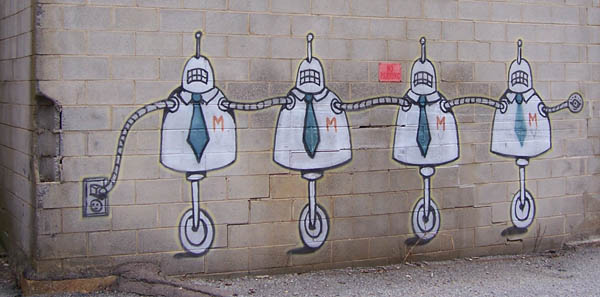The launch event for the book, “The Second Machine Age,” was a significant one from the perspective of many different schools of thinking. Be it economics, technology or philosophy – all fields were broached in detail by the magnificent duo who wrote this book, and who took the time to answer some of the questions that people had, while keeping it simple for everyone.
Moderated by the entrepreneur and investor Alexis Ohanian, the event started off with Andy McAfee introducing himself and his co-author, Eric Brynjolfsson. Explaining the topic of the book, Eric stated that humans have changed the world through two basic systems – the power system that generates the physical energy to change matter and produce goods and services; and the control system that focuses the power. Until we learned how to generate power through machines, he explained, our economics had been stagnated – until the machine age, better known as the Industrial Revolution.
But, he added, that was just the beginning and today we are entering the second machine age, the one where we are going to boost the economy and human history a lot further with the machines that revolutionize the control systems.
To understand the exact nature of the revolution, he explained why the machines have not been a part of the control system until recently. Humans have had three basic abilities beyond machines. First was the autonomous movement and fine motor control, which was followed by natural language and complex communication capabilities. Lastly, it was the ability to correlate information and see patterns. He added that, in recent years, machines have started to overcome these obstacles to become true autonomous control systems of the already mechanical power systems.
Eric went on to demonstrate the exact ways this impacts the economy and the lives of all the people affected, due to these inventions. In the past, rise in productivity and GDP was coupled with the median wage of workers. Consequently, it positively impacted the lives and living standards of all, because no matter what the business was, it always required humans in every aspect of production and delivery. But this is changing due to machines taking over the control systems. This is called the technological bias, and it works in three layers – the skill bias, with less skilled workers earning less and the skilled ones earning more; the capital bias, where once the earnings from a business needed to be shared with all the employee,can now go directly to the investors of capital because many of the production processes are done by machines. The last one is superstar bias, which means that the significant few with skills can use the machines to create and deliver their ideas and intangible goods without the need for any other humans – so the technology favors them only, not the general population.
At this point, the floor returned to co-author McAfee and he addressed the very question forming in our minds at that time: is all of this real or just speculation? He gave us examples of where machines are already capable of replacing humans – such as the AI that had already been able to see the pattern that humans love cat videos, from the thousands of pictures it was given at random, hence proving that machines can see patterns and do research. He showed us Baxter, the robot that can learn, through imitation, the work on an assembly line without prior programming, which while costing 1/5 of the current price. The robot showcases the ability of fine motor control and autonomous movement.He also talked about Ellie, the digital therapist, which can recognize emotions from facial expressions and voice, and has already proven to be successful in showcasing the command of language and complex communication that robots are capable of.
After showcasing the technology, he went into the main theme of the book: how can all these change the future? He warned thatunless we prepare for the second machine age now, it can lead us to dire consequences, a theme that repeats in his presentation and the book. To answer how to deal with this, he went back to the basics – entrepreneurship development, education and better laws for the influx of skilled workers. He added that the US government was doing a terrible job in everything except the education in that respect. He considered that there can be two scenarios, and opted for the future where the machines supportpeople, who are then free to pursue creative endeavors.
The event ended with the duo acknowledging that their work was influenced in part by the movies The Terminator and The Matrix, and the dystopian futures that they have portrayed. They firmly concluded that, if we don’t adapt ourselves to make use of technology properly, things can go very bad, and it is important to adapt ourselves in every way to ensure that it does not. After all, they reaffirmed, nothing short of an apocalypse can stop the progress of the second machine age.
Image credit: CC by Justin Morgan




